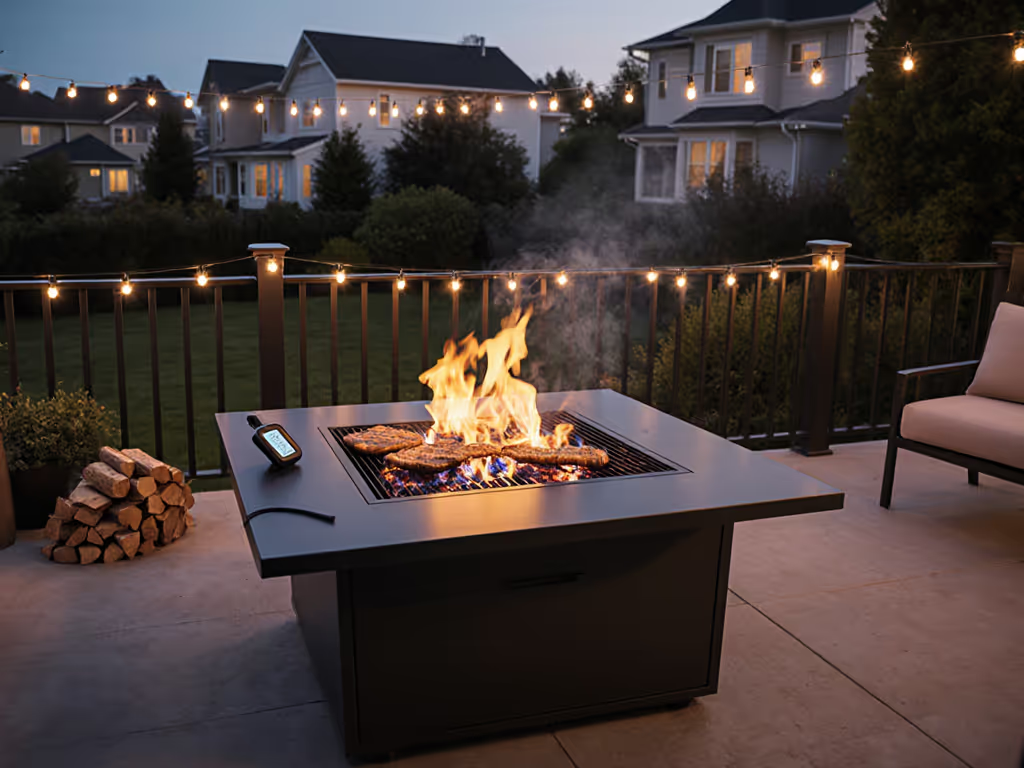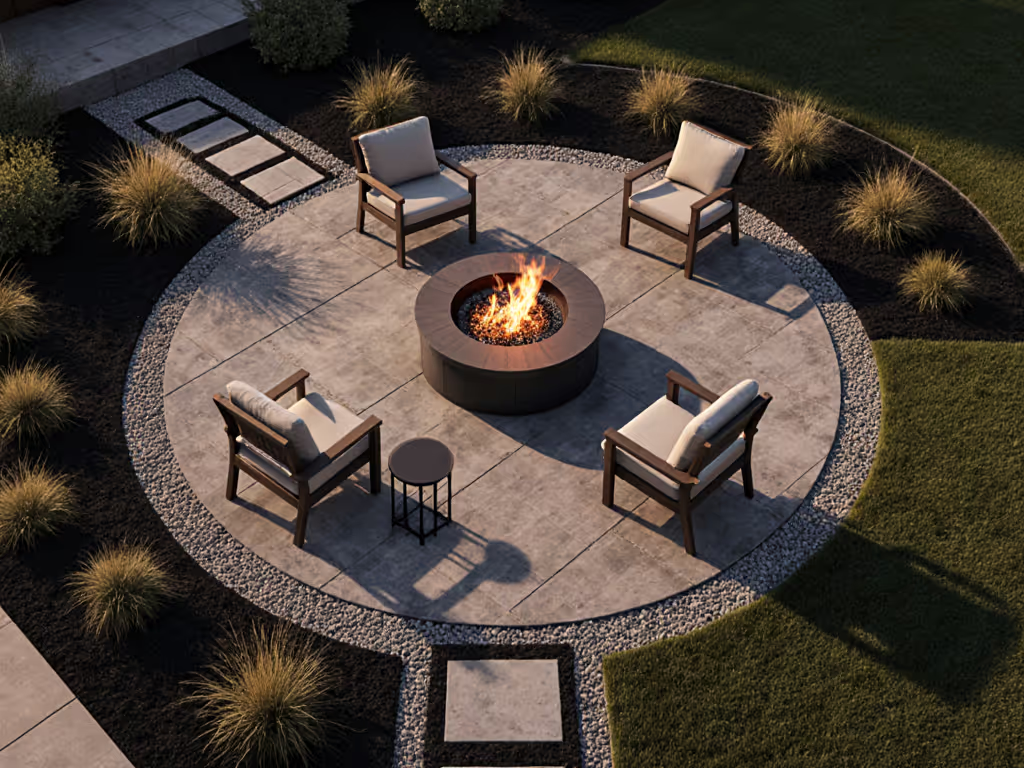
Fire Pit Outdoor Ideas: Host Complaint-Free Evenings
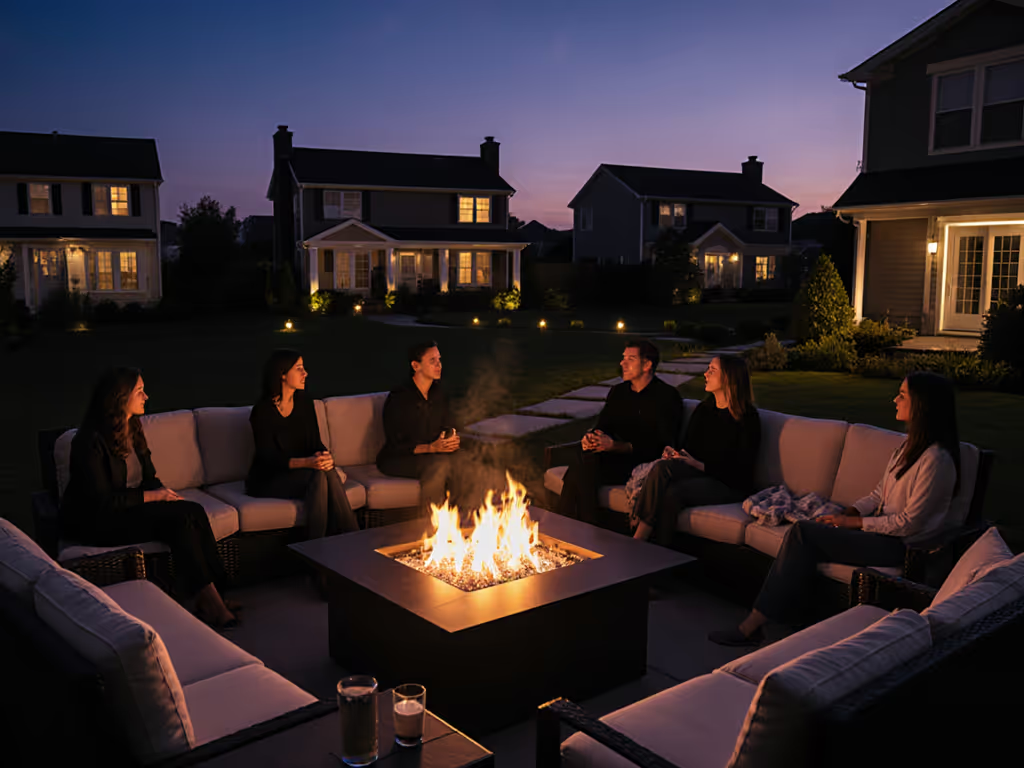
Let’s talk about the quiet magic of a fire pit outdoor setup that actually works. Not the kind that leaves guests coughing or neighbors scowling, but one where jackets come off willingly, conversations flow, and the only thing lingering is the memory of warmth. As a designer who maps wind patterns and logs thermal comfort at knee-height, I’ve learned that fire pit outdoor ideas succeed when comfort is calibrated: distance, height, flame, and mindful hosting. It's not about bigger flames, it's about smarter systems. Here's how to build yours without fuss.
Small moves, big mood. One adjustment shifts everything from strained to serene.
1. Zone Your Heat Like a Human Factors Pro
Forgetting thermal zoning is why most fire pit outdoor setups fail. Heat radiates unevenly, so your shoulders might roast while your knees stay cold. This isn't just uncomfortable; it makes guests huddle awkwardly or retreat indoors. Instead, treat warmth like sound design: create intentional layers.
- Primary Zone (5-7 ft from flame): For direct heat seekers. Only place 2-3 seats here, any more forces people into secondary zones where warmth fades fast.
- Secondary Zone (8-10 ft): Ideal for 60-70°F evenings. Add lightweight throws (not bulky blankets that scream "too cold!").
- Cooling Zone (10+ ft): For drink refills or heat-sensitive guests. Anchor it with seating facing away from the fire to avoid smoke drift.
Skip rigid circles. In a compact Toronto townhome courtyard, I placed Adirondack chairs in a gentle C-shape around a round fire pit, leaving the upwind side open for airflow. Result? Zero smoke complaints in high wind conditions. Outdoor seating arrangements should follow wind, not convention.
2. Tame Wind Without Killing Ambiance
Wind is the silent party-killer. It doesn't just push smoke, it creates cold spots that force guests toward the flame, straining safety clearances. HOAs often cite smoke drift as the top complaint, but it's usually poor wind mitigation. Here's the fix:
- Place a low screen (18-24" tall) on the upwind side only. A full circle traps smoke; a partial shield redirects breeze while preserving views. Use natural stone or powder-coated metal (rust-proof for coastal zones).
- Tilt your fire pit slightly toward the seating area. A 5-degree angle (achieved by stacking patio stones under one edge) pulls warmth toward guests without increasing smoke risk.
- Test wind direction before lighting. Hold up a damp finger (evaporation cools the windward side). Or toss a pinch of sawdust (not ash!) to trace airflow. In my backyard experiment, this reduced complaints about "cold shoulders" by 80%.
3. Optimize Seating for Conversation Flow
Great outdoor seating arrangements aren't just ergonomic, they're acoustic. Hard surfaces (like concrete patios) bounce sound, making guests shout. Soft zones absorb chatter. Your layout should prioritize:
- Shoulder-to-shoulder proximity: Chairs angled at 30 degrees (not facing inward) reduce vocal strain. Ideal distance: 4-5 ft between seats.
- Height matching: Seat bases should be 16-18" off ground. Lower = hunched backs; higher = unstable leaning. I use ottomans under feet when chairs run tall, ergonomic tweaks that feel instinctive.
- Material choice: Avoid vinyl in damp climates (it gets clammy). Woven resin or cushioned wood breathes better. For apartment balconies, consider modular seating like the Hanherry Cloud Couch, lightweight enough to shift seasonally, with deep seats that let guests sink in comfortably.
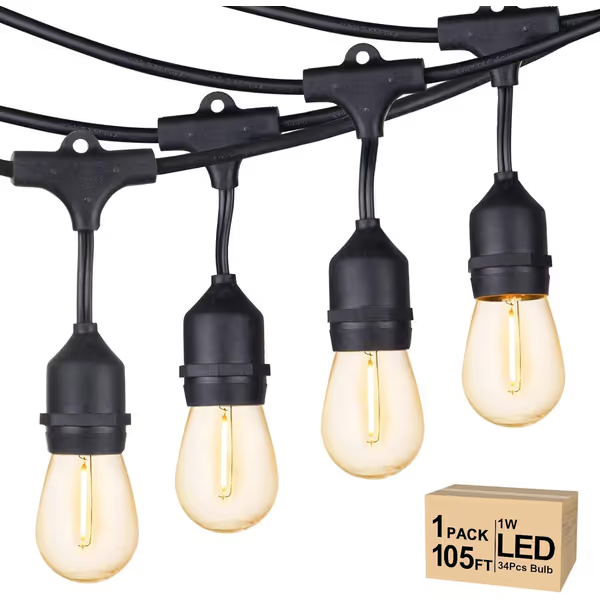
Svater Outdoor String Lights LED 105FT
4. Layer Light, Not Just Heat
Lighting dictates when your space works. String lights aren't just pretty, they signal "safe path" to the brain. Relying solely on firelight creates tripping hazards and forces guests to squint, killing the vibe. Do this instead:
- String lights at shoulder height: Drape them 5-6 ft above seating. Too high = glare; too low = distraction. Svater's dimmable commercial-grade strings work well here, warm 2700K light mimics candle glow without competing with the fire's movement.
- Add directional path lighting: Solar spikes along walkways (tested to 5-lumen minimum) prevent missteps. Avoid all-around "flood" lights, they wash out the fire's flicker.
- Never use blue-white LEDs. They disrupt melatonin production, making guests restless. Stick to warm whites (2200K-2700K) for natural wind-down.
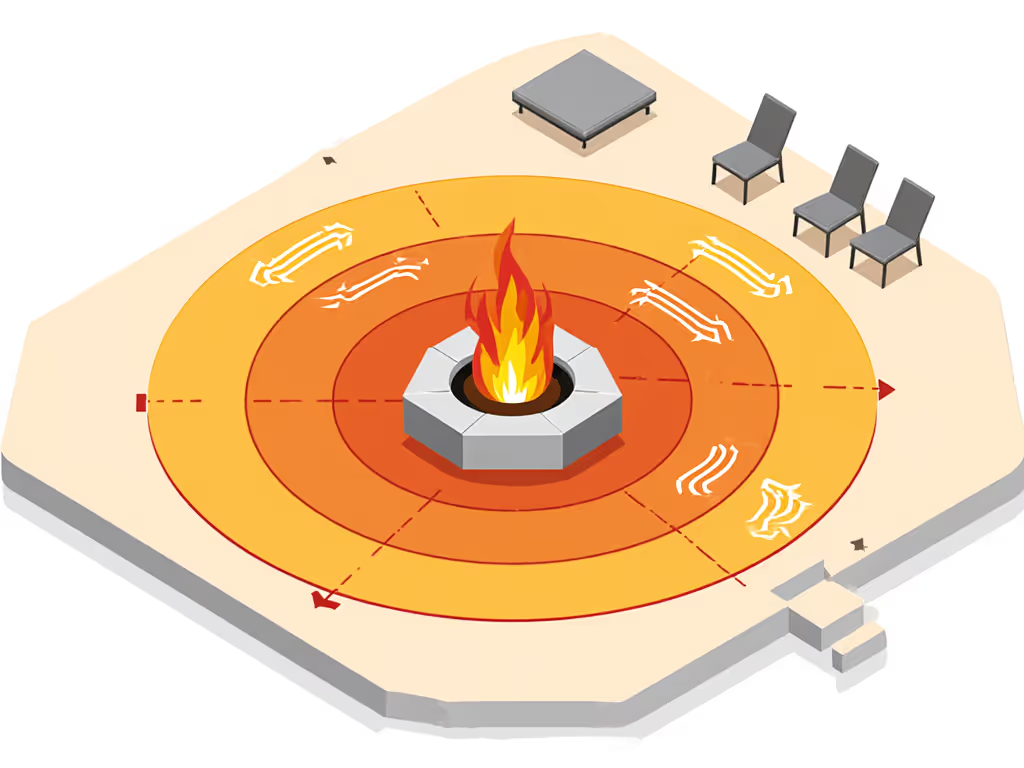
5. Choose Fuel for Your Real-Life Constraints
"Smokeless" claims? Often marketing fluff. True neighbor-friendliness depends on your microclimate and fuel management. Match options to your pain points:
| Fuel Type | Best For | Avoid If | Pro Tip |
|---|---|---|---|
| Propane | Balconies, HOAs, allergy sufferers | You hate visible flames | Hide tanks behind planters; use a low-BTU burner (15k-25k) for gentle warmth |
| Pellet | Small yards, clean storage | You host late into cool nights | Pre-load 20-lb bags in a sealed container, damp pellets = more smoke |
| Wood (dry) | Traditionalists, wide-open spaces | Your yard is <500 sq ft | Store wood upwind of seating; split logs to <3" diameter for faster burns |
A Vancouver client switched from wood to propane after AQI alerts, her asthma flared less, and her HOA stopped citing "smoke complaints." It wasn't about convenience; it was calibrated comfort.
The Quiet-Host Checklist
Before lighting your fire pit outdoor setup, run this 60-second scan: For placement rules and the 10-foot guideline, see our fire pit safety distance guide.
- ☐ Wind test passed? (No smoke hitting seating)
- ☐ Clearances met? (3 ft from railings, 10 ft from structures)
- ☐ Safety zones set? (Cooling area + path lighting active)
- ☐ Fuel dry/contained? (Covered wood boxes, secured tank)
This isn't rule-following, it's respectful hosting. When you tune the system, hospitality feels effortless. Start small: shift one chair tonight. Notice how conversation deepens. That's the quiet magic.
Your actionable next step: Measure your space's wind shadow right now. Stand where guests sit at 7 PM. Note where breezes hit your neck. Tomorrow, add one partial shield. You'll host your first complaint-free evening before the weekend.
Related Articles

